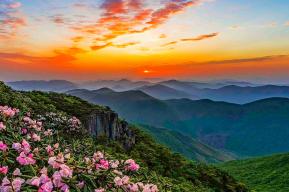
Omo
By diversifying local economies in and around biosphere reserves, the Green Economy Biosphere Reserves project (GEBR) contributes to the conservation of biodiversity, poverty reduction and sustainable development. In the Omo Biosphere Reserve – with the support of KOICA – the GEBR project has been implemented to enhance the socio-economic well-being of local communities, and encourage learning and knowledge building on sustainable development practice.
In the podcast, Sunday Onweh, grascutter (Thryonomys swinderianus) and Gbadebo Oluwatoyin (mushroom farmer) explain how the GEBR project has beneted them, while Clifford Omonu, the Omo Biosphere Reserve Manager, presents other new initiatives.
Butterfly, butterfly
The Omo Biosphere Reserve is the richest area in Africa for butteries, many species of which are endemic. One species was even named after the forest: the Bebearia omo (Omo Forester), when it was discovered in the Omo forest reserve.

Around 100 elephants in Omo
Elephants play a crucial role in the biosphere reserve; they help to disperse seeds and create spaces for other plant species to grow. Nevertheless, due to illegal hunting and habitat loss, elephant numbers in Nigeria have declined. There are around 100 African forest elephants (Loxodonta africana) left in Omo.

Green economy
The Green Economy in Biosphere Reserves (GEBR) project was implemented in the biosphere reserve to improve revenues based on sustainable development practices, such as snail farming. The project was so successful that its practices are now being replicated in countries in the Lake Chad Basin.









